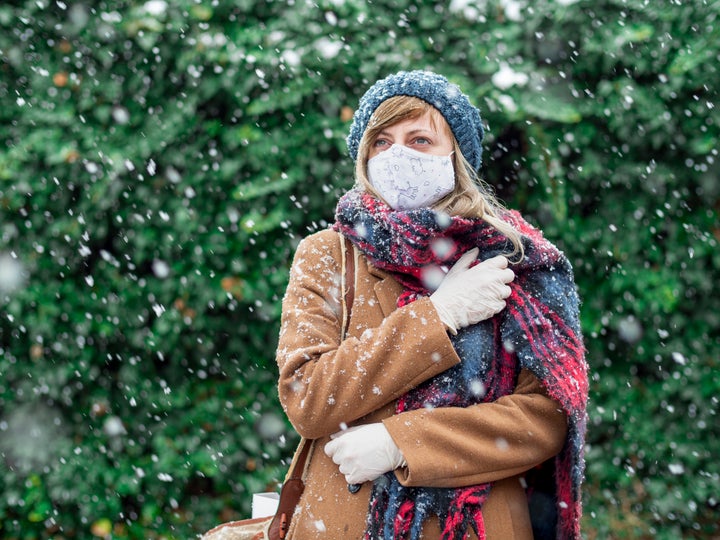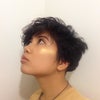Canadians already know that face masks are important to wear at this stage of the COVID-19 pandemic and likely have a stash they regularly use. But the latest guidance from Canada’s top doctor might have you using them differently: If you wear a face mask, make sure it has three layers.
Chief medical officer Dr. Theresa Tam shared the government’s upgraded advice recommending three-layer face masks in a press conference on Tuesday, stating the changes were brought on by developments made in pandemic safety research in the last few months.
Although two layers get the job done, three is the magic number when it comes to ideal protection without making it hard to breathe, studies have shown.
The Public Health Agency of Canada recommends wearing a face mask out in public and indoors when around people you don’t live with. They also continue to encourage using masks made out of cotton or similar fabric that medical research have found to be effective against droplets.
What’s new is that they now suggest masks have a “filter-type” layer sandwiched between two layers of fabric, and unlike other layers, be made out of a material that traps viral particles.
Does this mean your collection of single or double-layer masks are useless? Not necessarily. HuffPost Canada spoke to Dr. Abdu Sharkawy, an infectious diseases specialist and University of Toronto assistant professor of medicine, about how Canadians should interpret these new guidelines in their everyday lives and what mask tips they should keep in mind:
First off: Don’t panic over the three layers
Sharkawy cautioned Canadians to keep calm when following the new guidelines and not to “make this more complicated than this needs to be.”
″When we make prescriptive recommendations about a singular safety element, the tendency is for people to fixate and lose sight of the other things that are really critical to be aware of,” Sharkawy said. As an example, he said some might wear the three-layer face masks and think that extra layer makes it safe to stop social distancing and go to indoor gatherings.
“This is a theme that runs through the pandemic. There’s nothing void of risk, but it can be minimized by being aware of all the areas of mitigation. The minute we lose sight of one area is the minute we start running problems.”
That means people should keep in mind that three-layer masks are just an upgraded tool in the COVID-19 prevention toolkit, one that shouldn’t take the place of other tools like social distancing or adequate ventilation.
Mask advice especially important in second wave
Why should Canadians take the feds’ increased mask measures seriously? Sharkawy points to the differences between the first wave and the second wave: the former had nationwide restrictions, business closures, and warmer weather, making it easier for people to either stay at home or socialize outside.

“Winter is essentially at our doorstep and distancing becomes inherently more challenging when people are spending more time indoors,” he said. “Whatever we can do that’s practical and user-friendly should be taken advantage of, masks are obviously central to this strategy.”
You can easily alter your existing masks with household items
Upgrading the face masks you already own can also be done without any crafty skills, as Sharkawy says it’s OK to fold a clean piece of tissue and position it under your mask as an extra layer of protection — it has the added perk of absorbing humidity that irks glasses wearers.
A piece of coffee filter inside of a mask, he notes, can also serve the same purpose when exhaling.
“Using a variation of one of these is not only sufficient, but easy for people to manage without forgetting that masking still needs to be tied to strong awareness of distancing and ventilation,” he explained.
There are 3-ply mask tutorials available
If your current face masks don’t have built-in filter pocket, you can follow a tutorial by the feds to make your own triple-layer mask.
Federal guidelines share both sewing and non-sewing instructions for making three-layer face masks at home. If a filter-specific fabric isn’t used, their website indicates that “a third piece of tightly woven cotton” is fine too.
Wearing masks on top of each other isn’t the way to go
As mask efficiency expert Raina MacIntyre told NPR, in theory a mask on a mask does work; it’s another physical layer that serves the purpose of preventing viral spread.
However, the outlet also notes several weaknesses to this strategy, such as discomfort, difficulty breathing, and a likelihood of touching your masks a lot to re-adjust.
Each layer can have a different purpose
The World Health Organization (WHO) has backed three-layer masks since June; it says that ideally, the mask’s mouth-touching layer should absorb droplets before reaching the filter layer and its outward layer must repel droplets.
The hybrid-fabric masks are approved by Sharkawy, as the different materials have proven to be more effective than simple cotton masks in tests.
Many retailers already sell three-layer face masks
Well.ca: The “Happy Triple Layer Comfort Masks” follow WHO recommendations for hydrophilic, filtered, and hydrophobic layers.
Old Navy: The U.S. retailer has multi-packs of pleated three-layer cotton face masks in a variety of colours.
Etsy: Many independent Canadian mask sellers tag their products as having three filters, but be sure to research what materials they’re made of and read reviews when applicable.
Buying a new mask? Remember this simple trick
Sharkawy has a helpful tip for making sure your mask is thick enough: “Hold your hand six inches away from your mask, take a deep breath in and a hot breath out. If you can feel your breath, your mask isn’t good enough.”
There’s also the popular candle method:
And whatever you do, avoid these masks
Many popular masks may look stylish, but aren’t up to health regulations, Sharkawy said. Here are a few that he hopes people will avoid:
Masks with external valves: “Must not be worn under any circumstances. They protect you from others who have a viral infection, but provide zero filtration to everyone around you. I shudder in fear, they essentially do nothing and should be banned. I feel that strongly.”
Mingle: “These Mingle face masks look fashionable, but have open vents on their sides. It’s really like driving in the rain with the sunroof down.”
Neck warmers: “These gaiter activewear masks by manufacturers are not as useful as face masks.”
Also on HuffPost:
